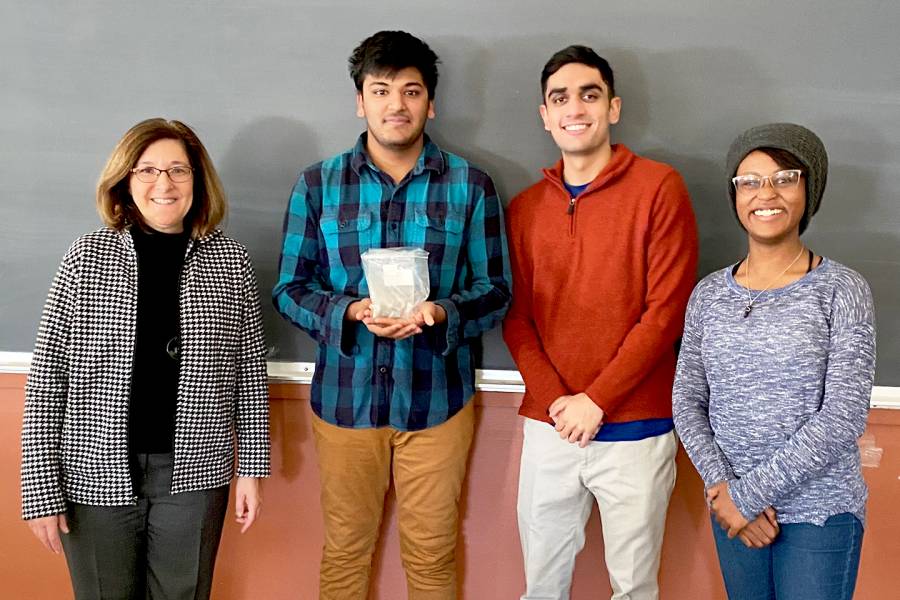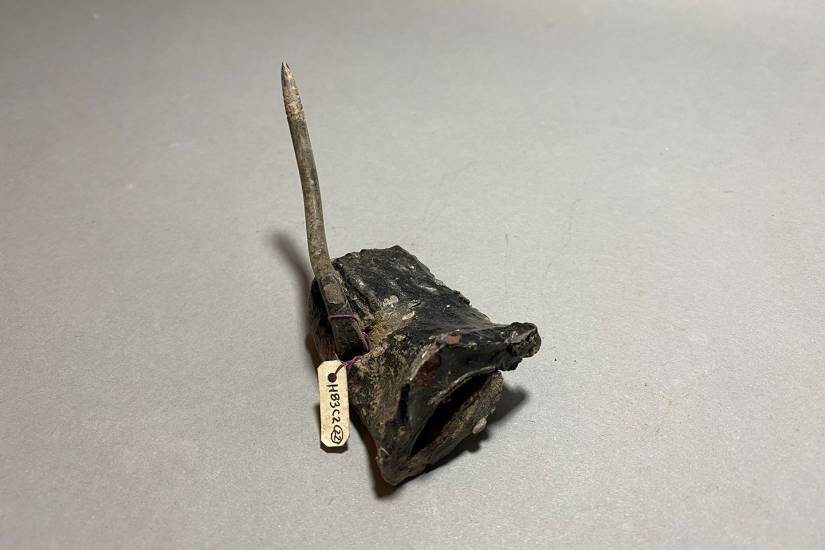By using modern technology and closely examining history, three Johns Hopkins engineering students have identified a small chunk of metal as a century-old piece of roofing material from a historic building on the university’s Homewood campus.
Unearthed during an archaeological dig near the Homewood Museum in the early 1980s, the artifact remained in a collection there until a group of students set out to determine its origins. As part of their Materials Characterization class, senior biomedical engineering majors Anish Thyagarajan, Varun Kedia, and Avery Burrell determined the artifact is made primarily of lead with traces of tin. After researching early 20th-century roofing techniques, they found that the piece’s makeup corresponds with materials used in a roofing technique known as terne roofing, popular between 1900 and 1920. The students then corroborated their findings with Homewood Museum renovation records and determined the artifact likely came from a renovation of the building that now houses the Homewood Museum.
The students used several characterization techniques, but the most conclusive results came from a technique called energy dispersive X-ray spectroscopy, or EDS.
“EDS involves directing a high beam of electrons at a sample—exciting electrons in the surface atoms of the sample and causing them to emit X-rays, which can then be measured,” Thyagarajan explains.


